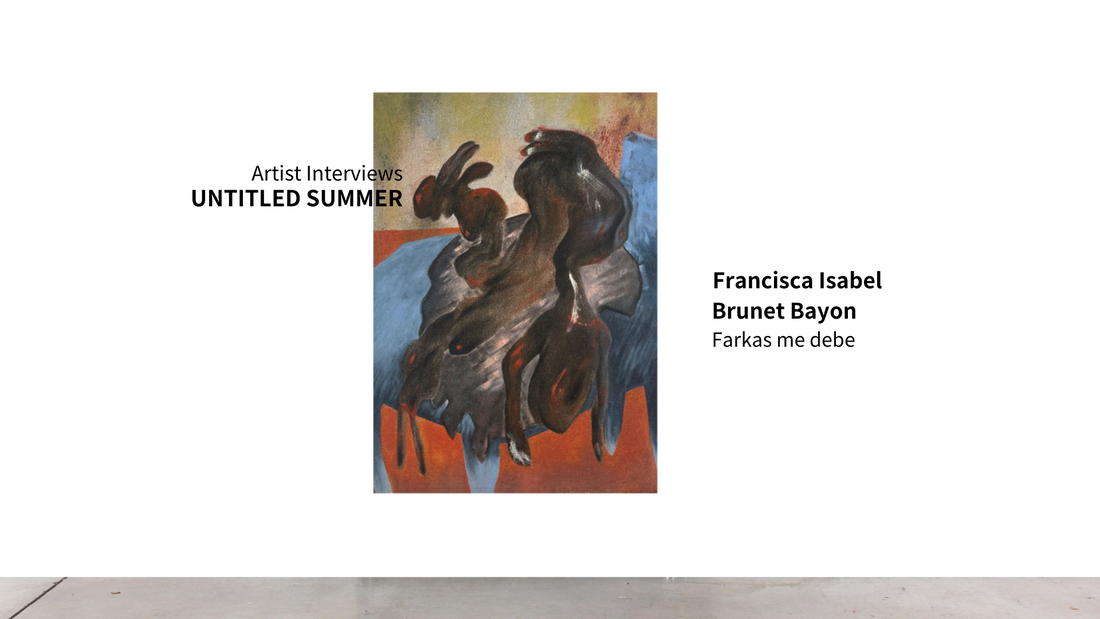Can you describe your creative process and how you approach creating a new piece of art?
I find my ways of working to be very chaotic. I wish I would have a plan or a way of organizing ideas but I don't. So I’m usually working in many things at the same time or nothing at all. It’s a bit like this, when it comes to starting work I have like this invasion of images that relate to an idea, which I never get to fully accomplish, because its really hard for me to manage them according to a plan and not wanting them to get all done simultaneously. Then, there’s this sort of exhaustion and frustration that leads to a period of not finishing any of them and leaving them standing there for some time. And in the end I get to fully commit to one piece and not being able to focus on anything else while also losing the idea or the impulse that made the work happen in the first place so it starts to reshape in a mostly intuitive way but also with more reflective and rational moments where i get to just spend time figuring out what it that its trying to do or what I want from it, or what it needs from me.
Are there particular themes or concepts that you explore in your work in general?
I would say my work is about constantly asking myself questions about the subjective knowledge that i have from the outside world which makes me want to explore the confrontations between the intimate and the alien. And in this path I find myself drawn by whats ugly, clumsy and ordinary but trying to use this qualities in my work without subordinating whats represented to identification.
I’m always looking for what’s mysterious about the things that I see outside and inside and it usually gets translated into amorphous figures that remind of bodies, limbs or basic biological beings that are being held by an undefined and hostile environment that grows and moves in weird static ways around them.
I’m interested in what’s distorted and ambiguous and difficult to place and even more difficult to talk about, personal questions about hybrid identities in unknown territories and from there, the awareness of undetermined and unfixed roles both in the domestic and the social space, making it always uncomfortable and awkward.
Relations or dualities that I've always been interested in are: the wild and the civilized; exposing and hiding; desire and disgust; pleasure and pain; visceral and rational; constricted and open; exuberancy and austerity, amongst others.
How do you want your audience to engage with your pieces?
I feel like you don't really get to choose how the viewer as I prefer thinking about it rather than audience, gets to experience or relate to the work. And that’s really what makes art language dynamic and probably more universal than other languages and keeps it worth exploring for me. Cause if you have a too specific idea on how you want the viewer to engage with the piece, I believe you risk honesty and also getting stuck and not moving forward with the work that you’re doing and how it is constantly being shaped by who you are, whats happening around you, what you’re seeing, what you’re experiencing, which for me are things that dramatically affect my work. It’s not like you get to choose whats being cooked, unless you commit to and idea as if it would be just business. Therefore the only thing I look for is hopefully a genuine response that makes any kind of sense to whoever is standing in front of it.
Francisca Isabel Brunet Bayon's Farkas me debe and La cuarta parte está por verse / 2 were exhibited in UNTITLED SUMMER at Chelsea Walls.
